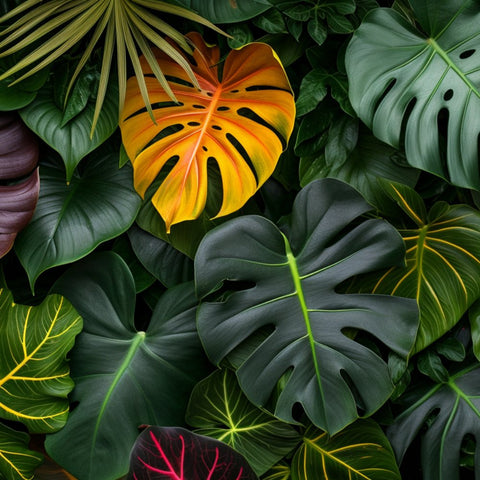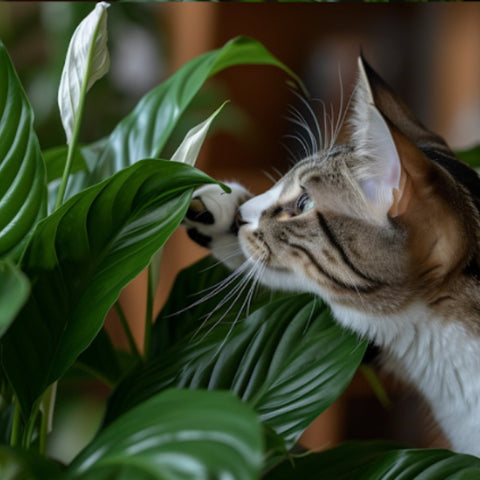Introduction

If you're a plant lover, chances are you've heard of the philodendron. This popular houseplant has captured the hearts of many with its lush foliage and easy-to-care-for nature. In this comprehensive guide, we'll delve into the history, care, and benefits of having a philodendron, as well as provide tips for troubleshooting common problems. Whether you're a beginner or a seasoned plant enthusiast, our guide will equip you with everything you need to know about this beloved plant.
History and Origin of Philodendron
The philodendron's origin can be traced back to the tropical regions of Central and South America. It thrives in the lush rainforests, where it climbs trees and spreads its vibrant leaves to catch as much sunlight as possible. This natural habitat provides the perfect conditions for philodendrons to thrive, and their ability to adapt to different environments has contributed to their popularity as houseplants.
Over time, philodendrons made their way from the rainforests into human cultivation. Their unique foliage and resilient nature caught the attention of horticulturists and plant enthusiasts, leading to their introduction as popular houseplants. The philodendron's ability to thrive in both low light and bright indirect light settings made it an ideal choice for indoor spaces, further solidifying its position as a household favorite.
Popular Varieties of Philodendron

Philodendrons are a diverse group of plants, with over 480 known species and countless cultivated varieties. Some of the most popular varieties include the heartleaf philodendron (Philodendron hederaceum), the fiddle-leaf philodendron (Philodendron panduriforme), and the selloum philodendron (Philodendron bipinnatifidum). Each variety has its own unique characteristics and visual appeal, ranging from heart-shaped leaves to impressive size and intricate foliage patterns.
For beginners, the heartleaf philodendron is a great choice. It's easy to care for, forgiving of occasional neglect, and can thrive in a wide range of lighting conditions. On the other hand, the fiddle-leaf philodendron requires more attention and prefers bright indirect light. The selloum philodendron, with its large, deeply cut leaves, is another stunning variety that adds a tropical touch to any space but may require more space and maintenance.
How to Care for a Philodendron
To ensure your philodendron thrives, it's important to provide it with the right growing conditions. Philodendrons prefer bright indirect light, although they can tolerate some direct sunlight. They thrive in temperatures between 65-85°F (18-29°C) and appreciate higher humidity levels, making them a great choice for bathrooms or kitchens. Regular watering, keeping the soil moist but not soggy, is crucial for philodendrons. A well-draining soil mix enriched with organic matter helps promote healthy growth.
Regular pruning is key to maintain a compact and attractive philodendron. Remove any dead or yellowing leaves, as well as any leggy growth to encourage bushier growth. Repotting is also necessary when the plant becomes root-bound, usually every one to two years, using a slightly larger pot with fresh potting mix.
Benefits of Having a Philodendron

Aside from their aesthetic appeal, philodendrons offer several benefits that make them a valuable addition to any indoor space. These plants are known for their air-purifying properties, removing harmful toxins like formaldehyde and benzene from the air. This can improve indoor air quality, making them especially beneficial for those with respiratory conditions or allergies.
Philodendrons also have potential mental health benefits. Being surrounded by nature and greenery has been shown to reduce stress, improve mood, and increase productivity. Having a philodendron in your living or workspace can provide a sense of calm and tranquility, helping to create a more relaxed and pleasant environment.
Common Problems and Troubleshooting
Like any plant, philodendrons can encounter a few hiccups along the way. The most common issues include pests like spider mites or mealybugs, yellowing leaves, or root rot. To combat pests, regular inspection and treatment with organic insecticidal soaps or neem oil is recommended. Yellowing leaves can be a sign of overwatering or nutrient deficiencies, while root rot can occur from improper drainage or overwatering. Adjusting watering practices, improving soil drainage, and providing balanced fertilizer can help address these issues.
Maintaining a healthy philodendron throughout the year also requires different care in each season. During the warmer months, philodendrons appreciate more frequent watering and occasional misting to increase humidity. In the cooler months, reducing watering frequency and avoiding cold drafts can help prevent stress or damage to the plant.
Philodendron Propagation

One of the joys of owning a philodendron is the opportunity to propagate and share its beauty with others. There are several methods you can use to propagate your philodendron, such as stem cuttings and division. Stem cuttings involve removing a healthy stem with a few leaves, allowing it to develop roots in water or directly in soil. Division involves separating the plant into multiple sections, each with its own roots and foliage. Both methods can be successful if done correctly, and we'll provide step-by-step instructions to help you achieve successful propagation.
Fun Facts and Interesting Information
Did you know that philodendrons are part of the Araceae family, which includes the popular houseplants pothos and peace lilies? These plants all share similar characteristics and care requirements, making them a great choice for plant enthusiasts. Philodendrons also have cultural significance, with some species being used in traditional medicine or believed to bring good luck.
Another fascinating fact about philodendrons is their ability to climb trees using aerial roots. These roots anchor themselves to tree bark and help support the plant as it reaches for sunlight. This unique adaptation allows philodendrons to thrive in their natural habitat and adds an interesting element to their growth patterns.
Conclusion
In conclusion, philodendrons are much more than just beautiful houseplants. Their rich history, varied varieties, and ease of care make them a top choice for plant lovers around the world. From their air-purifying properties to their potential mental health benefits, philodendrons offer numerous advantages for indoor spaces. Whether you're a beginner or an experienced plant enthusiast, adding a philodendron to your collection is sure to enhance your living or workspace. Explore local nurseries or online options to find the perfect philodendron plant for you and start reaping the benefits of this beloved houseplant.





























Comments (0)
There are no comments for this article. Be the first one to leave a message!